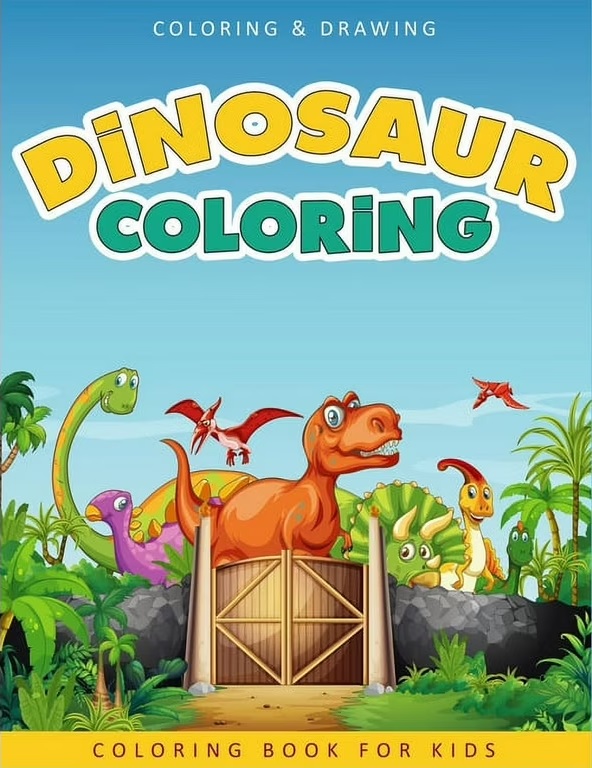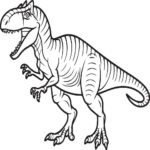The name for this dinosaur is a bit debated. Some say it should be called apatosaurus while others say it should be brontosaurus. As a popular kind of dinosaur that are usually seen on movies and cartoons, a lot of people got upset when some studies showed that its fossils could be just an adult apatosaurus. And since the word ‘apatosaurus’ was used first, it stood as the official name for quite a while before research completed in 2015 was made to claim that it’s a different kind of dinosaur.

This dinosaur had an exceptionally long neck. While some believe it might have been flexible enough to reach tall trees or low-growing plants—similar to an ostrich’s neck—studies of its neck bones suggest otherwise. Evidence indicates the neck was likely less flexible, resembling the stiffness of a giraffe’s. Regardless, their impressive height would have made feeding on tree foliage effortless, and they likely consumed substantial amounts of vegetation.
It had a bulky oval-shaped body and its legs are thick and strong. Its tail is really long, it starts thick coming from the hips and gets really slender at the end like a whip. Someone suggested that it probably could have used its long slender tail to create a striking thunderous sound by whipping it fast enough, shocking their foes. Like the apatosaurus, the rounded slender head of brontosaurus was disproportionately small for its body size.
Brontosaurus Drawing
Draw a big slightly tilted oval for the base or the body, the hip side of the dinosaur should be thicker than the area of the shoulders. Make a long slanted line for the neck and draw another much smaller oval for the head. Draw the length of the tail and the legs. Make sure that you put some folds on the legs because this will be your guide to locate the knees.


Draw the legs. The back legs are longer than the front legs and the thighs are much thicker. Because of its length, the back legs (thigh) should be placed higher on the body compared to the front legs. Don’t just simply make a straight line for the legs, draw a rounded or curved line for the thick muscular thigh.

Draw the thick long neck. Follow the curve of the line you drew before and slant/curve the lines as you connect the head to the body. Draw the facial features. For a head of this size, the eyes and the mouth are small. The tail is thicker coming from the hips and then become very thin (like a whip) as it reaches the tip.

Once you have got the main outlines drawn, you can now erase the base.
Make sure that the body proportion of the dinosaur is correct before you move along to the next step. For those drawing on a paper, this is the last chance in which you could still make some adjustments.

Once you are left with the main outline of the dinosaur’s shape (after erasing the base), re-trace your pencil outlines with a more visible and darker solid lines using a pen or a marker.

Add some ripples or folds on the skin using thin fine lines or expressive lines. Put some curved thin lines on the upper edges of the legs, the sides of the belly, and a few curved lines in row for the lower sides of the tail and the neck. And draw the circular lines on the knees.

Add the body marks/prints. Make sure that you curve each marks with thee rounded sides of the body.
This time we are going to use three tones of the same color, and another color for the body prints. Whatever main color you choose, just follow how the dark, medium and bright tones are applied. I used green and brown for this dinosaur.
Apply dark green on the edges of the outlines. Just simply follow the curves and slopes of the dinosaur’s shape. Apply more dark tone on the undersides and on the farther legs (the ones overlapped by the other). Also apply this tone on the ridges and folds of the body.

Next, apply the medium green. Place this tone adjacent to the dark green, maintaining the same directions and placements. By now, the body should be nearly filled, leaving only the brighter areas untouched: the central parts of the body, head, neck, tail, and small sections of the legs.

Fill the remaining areas (that should be green) with the brighter tone. At this point, the difference between the dark areas and the bright areas should be noticeable.

Color the body marks with another color (I chose brown) and the claws with gray.

Put some background on your drawing once you are done coloring the dinosaur. Placing some trees behind it would show how big this dinosaur is.

Brontosaurus was said to have grown with a length of 72 feet, and weighed about 15 tons. Not the biggest of the kind (the titanosaur argentinosaurus, the biggest dinosaur by record, was said to have grown a length of 120 feet), but it was still pretty big compared to other dinosaurs who roamed the land amongst them. Because of their enormous size, this creature probably moved quite slowly. It
belongs to the kind of dinosaurs called sauropods that are herbivore dinosaurs, a family which all of the members walked with four legs who have long necks and tails that only feeds on plants. The meaning of brontosaurus is “thunder lizard” in Greek.






